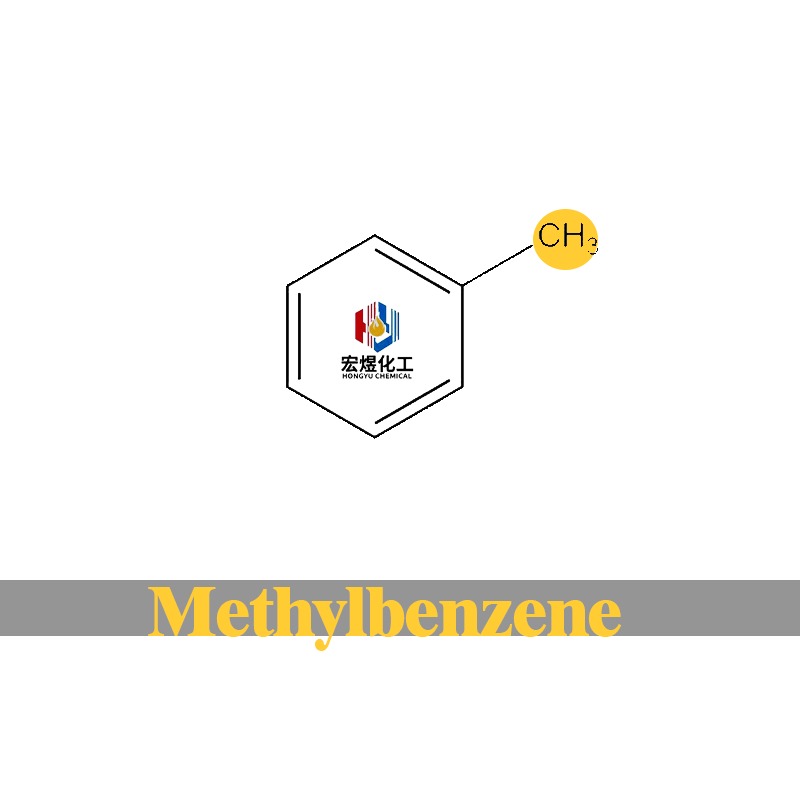


Toluene is mainly produced from crude oil through the petrochemical process. As a solvent it is used in oils, resins, natural and synthetic rubber, coal tar, asphalt, cellulose acetate, but also as a solvent for cellulose paints and varnishes, as well as used as a solvent for photographic plates, ink. Toluene is also the main raw material for organic synthesis, especially benzoyl and phenyl chloride, saccharin, trinitrotoluene and many dyes. It is also a component of aviation and automotive gasoline. Toluene is volatile and relatively unreactive in the environment. It is widely distributed in the environment due to air movement, and it is recirculated hydrophobically between the air and water bodies by rain and evaporation from water surfaces, and may eventually be degraded by biological and microbial oxidation. Aggregation of average airborne concentrations in many cities around the world shows that toluene concentrations are typically 112.5-150 μg/m3, mainly from gasoline-related emissions (automobile exhaust, gasoline processing), but also from solvent losses and emissions due to industrial activities. Toluene is used in large quantities as a solvent and as a high-octane gasoline additive, and is also an important feedstock for organic chemicals, but there is currently a relative surplus of benzene and xylenes compared to those obtained simultaneously from coal and petroleum, and therefore a considerable amount of toluene is used in the dealkylation of benzene or in the gasification of xylenes. A series of intermediates derived from toluene are widely used in the production of fine chemicals such as dyes; pharmaceuticals; pesticides; fire and explosives; auxiliaries; spices, etc., as well as in the synthetic materials industry. Toluene side chain chlorination of benzyl chloride; Benzyl chloride and benzyl trichloride, including their derivatives benzyl alcohol; benzaldehyde and benzoyl chloride (generally also from the benzoic acid phosgene gasification), in the pharmaceuticals; pesticides; dyestuffs, especially in the synthesis of spices are widely used. The cyclic chlorinated products of toluene are intermediates for pesticides, pharmaceuticals and dyes. Toluene oxidation to get benzoic acid, is an important food preservative (mainly use its sodium salt), also used as an intermediate in organic synthesis. Toluene and benzene derivatives by sulfonation of intermediates, including p-toluenesulfonic acid and its sodium salt; CLT acid; toluene-2,4-disulfonic acid; benzaldehyde-2,4-disulfonic acid; toluene sulfonyl chloride, etc., used in detergent additives, fertilizer anticaking additives; organic pigments; pharmaceuticals; dyes, etc. production. Toluene nitration produces a large number of intermediates. Many end products can be derived, of which the most important are in polyurethane products, dyes and organic pigments, rubber auxiliaries, pharmaceuticals, explosives and so on.
Benzene INFO
| English name | methylbenzene;Toluene |
| Other name |
Tol |
| Cas no | 108-88-3 |
| EINECS no | 203-625-9 |
| Chemical formula | C7H8 |
| HSCODE | 2902300000 |
| Molecular weight | 92.14 |
| Density | 0.872 g/cm³ |
| Appearance | Colorless transparent liquid |
| Melting point | -94.9 ℃ |
| Boiling point | 110.6 ℃ |
| Flash point | 4 ℃(CC) |
| Solubility | insoluble in water, miscible in benzene, ethanol, ether, chloroform and other organic solvents. |
| Package | Packing instruction of toluene Packing and storage and transportation: Toluene is shipped in small mouth iron drums or automobile tankers. Each barrel is 160kg, each car is 28t, and there should be obvious sign of flammable dangerous goods outside the package. |
| MOD | 28t |
| Shipping: | Promote shipping usually 25--35 days after receiving T/T 100% IN ADVANCE PAYMENT. |
COPYRIGHT © 2023 ALL RIGHTS RESERVED Hangzhou Hongyu Chemical Co., Ltd. Support by:Zhdr.Net | SiteMap